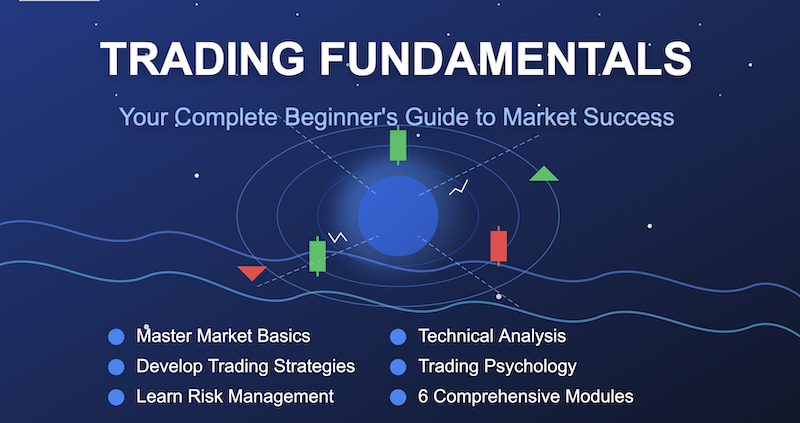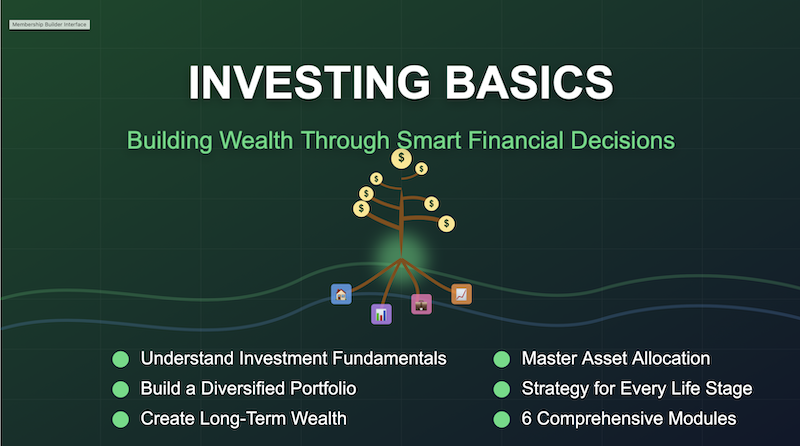From Demo to Real Money: The Critical Transition Every New Trader Must Master
26 min read
Published: June 10, 2025, 12:36 a.m. ET
Key Points
⚡Demo trading success rarely translates directly to live trading profitability - psychological pressure fundamentally changes decision-making processes
⚡ Position sizing becomes critical - most new traders risk too much capital per trade when transitioning to real money
⚡ Platform and execution differences - live markets introduce slippage, wider spreads, and timing delays absent in demo environments
⚡Emotional management is paramount - fear and greed override logical trading plans when real money is at stake
The statistics are sobering: while many traders achieve consistent profits in demo accounts, studies show that 80% of retail traders lose money in their first year of live trading.
This dramatic shift from simulated success to real-world losses reveals a fundamental truth about financial markets - trading with real money is an entirely different endeavor than trading with virtual capital.
The transition from demo to live trading represents one of the most critical junctures in a trader's development. Understanding why this transition proves so challenging, and more importantly, how to navigate it successfully, can mean the difference between joining the small percentage of profitable traders or becoming another cautionary statistic.
The Psychology Behind the Transition
The Phantom Profit Problem
Demo trading creates what behavioral finance experts call "phantom confidence" - a false sense of security built on results that cannot be replicated in live markets. Dr. Brett Steenbarger, a trading psychologist who has worked with hedge funds and proprietary trading firms, notes that demo trading removes the most significant variable in trading success: emotional pressure.
"When traders use virtual money, they make decisions with a clear mind," Steenbarger explains. "The moment real capital is at risk, cognitive biases that were dormant in the demo environment suddenly become dominant factors in decision-making."
Research from the CFA Institute shows that traders using demo accounts tend to:
Hold losing positions 47% longer than profitable ones
Cut winning trades 32% earlier than optimal exit points
Increase position sizes by an average of 60% when transitioning to live accounts
Abandon their trading plans within the first month of live trading 73% of the time
AvaTrade offers professionally designed model portfolios
Loss Aversion in Action
Nobel Prize-winning economist Daniel Kahneman's research on loss aversion explains why the transition proves so difficult. Humans naturally feel the pain of losses approximately 2.5 times more intensely than the pleasure of equivalent gains.
In demo trading, this psychological asymmetry is absent - virtual losses carry no emotional weight.When real money enters the equation, loss aversion triggers fight-or-flight responses that override rational decision-making.
Traders who calmly executed stop-losses in demo accounts often find themselves unable to close losing positions with real capital, hoping the market will "come back" to avoid realising actual losses.
WATCH LIST
Ready to put time on your side? With AvaTrade's instant account setup, you can begin investing in top companies like Apple, Microsoft, and Google in minutes.
Platform and Execution Reality Checks
The Slippage Shock
Demo trading platforms typically provide perfect execution - trades execute at exactly the price displayed on screen. Live trading introduces slippage, the difference between expected and actual execution prices.
During volatile market conditions, slippage can significantly impact profitability, especially for strategies that rely on precise entry and exit points.
Market maker brokers report average slippage of 0.1-0.3 pips on major currency pairs during normal market conditions, rising to 2-5 pips during high-impact news events. For a trader executing 100 trades per month, even minimal slippage can reduce annual returns by 3-8%.
Spread Dynamics and Real Costs
Demo accounts often display tighter spreads then what's available to retail traders in live markets.
The difference between bid and ask prices - the spread - represents a transaction cost that compounds over time.
ECN (Electronic Communication Network) brokers typically offer spreads starting at 0.1 pips on EUR/USD during London/New York overlap sessions, while market makers might show 0.8-1.2 pip spreads.
However, ECN brokers charge commissions ($3-7 per standard lot), while market makers embed costs in wider spreads.A scalping strategy that appeared profitable in demo with 0.5 pip spreads might become unprofitable in live markets with 1.2 pip spreads plus commission costs.
Order Execution Speed
High-frequency trading algorithms and institutional players can execute orders in microseconds. Retail traders face execution delays of 50-200 milliseconds, depending on broker infrastructure and internet connectivity.
For swing traders, this delay is negligible. For scalpers and day traders, it can determine profitability.
Requote occurrences - when brokers cannot fill orders at requested prices - happen approximately 2-5% of the time during normal market conditions, rising to 15-25% during high-impact news releases.
AvaTrade offers professionally designed model portfolios that include optimal allocations to tech leaders like Apple, Microsoft, and Google, balanced with other sectors.
AvaTrade offers professionally designed model portfolios that include optimal allocations to tech leaders like Apple, Microsoft, and Google, balanced with other sectors.
Risk Management in Live Markets
Stop Loss Discipline
Demo trading often creates bad habits around stop loss management. Without real financial consequences, traders may:
Move stop losses further from entry points when trades go against them
Remove stop losses entirely, hoping positions will recover
Use mental stops instead of placing actual orders
In live markets, these habits prove catastrophic. Professional traders use several stop loss strategies:
Technical stops: Based on support/resistance levels, moving averages, or chart patterns
Volatility stops: Adjusted for current market volatility using indicators like Average True Range (ATR) Time stops: Exiting positions after predetermined time periods regardless of profit/loss
Trailing stops: Moving stop losses in favour of profitable trades to protect gains
Correlation and Portfolio Risk
Demo trading typically focuses on individual trades rather than overall portfolio risk. Live trading requires understanding how different positions interact:
Currency correlation: EUR/USD and GBP/USD typically show 0.85+ correlation, meaning long positions in both pairs effectively double exposure to dollar weakness.
Sector correlation: In stock trading, holding multiple positions in the same sector (technology, healthcare, etc.) concentrates risk during sector-specific events.
Time correlation: Multiple trades entered during the same market session may all be affected by the same news events or market sentiment.
Risk management software and position sizing calculators help traders maintain appropriate diversification and avoid overconcentration.
Common Transition Mistakes and Solutions
Mistake 1: Immediate Full Position Sizing
The Problem: Jumping directly from demo to full-size positions without gradual adaptation.
The Solution: Implement a scaling plan over 3-6 months, starting with 10-25% of intended position sizes and increasing only after consistent profitability
Mistake 2: Abandoning Proven Strategies
The Problem: Changing trading approaches when initial live trades don't match demo performance.
The Solution: Maintain the same strategy that worked in demo for at least 50-100 live trades before making modifications. Focus on execution improvement rather than strategy changes.
Mistake 3: Emotional Overtrading
The Problem: Increasing trading frequency to "make up" for early losses or smaller position sizes.
The Solution: Maintain the same trading frequency as demo phase. Quality over quantity remains paramount in live markets.
Mistake 4: Ignoring Platform Differences
The Problem: Assuming demo execution will match live execution perfectly.
The Solution: Practice with live micro accounts during different market conditions to understand platform behaviour before increasing position sizes.
Ready to put time on your side? With AvaTrade's instant account setup, you can begin investing in top companies like Apple, Microsoft, and Google in minutes.
Measuring Transition Success
Key Performance Indicators
Successful transition isn't just about profitability - it's about maintaining consistent performance while adapting to real money pressures:
Consistency metrics:
Win rate comparison (demo vs. live)
Average profit/loss per trade
Maximum drawdown periods
Sharpe ratio or other risk-adjusted return measures
Behavioural metrics:
Adherence to original trading plan
Position sizing discipline
Stop loss execution consistency
Emotional stability during losing streaks
Execution metrics:
Slippage impact on returns
Order fill rates during volatile periods
Platform reliability during critical moments
Total trading costs as percentage of returns
Bottom Line
The transition from demo to live trading represents far more than simply switching from virtual to real money - it's a fundamental shift that tests every aspect of a trader's preparation, from psychological resilience to technical execution.
Success requires acknowledging that demo performance, while valuable for learning mechanics, cannot predict live trading results.
The traders who successfully navigate this transition share common characteristics: they approach it gradually, maintain rigorous risk management discipline, and focus on psychological adaptation as much as technical proficiency.
They understand that consistent small gains with real money far exceed inconsistent large gains with virtual capital.Most importantly, successful traders recognize that the transition period itself is part of their education - a necessary step in developing the emotional intelligence and practical skills required for long-term trading success.
Rather than rushing through this phase, they embrace it as an opportunity to build the foundation for sustainable profitability in live markets.
The information provided is for educational purposes only and does not constitute investment advice, trading advice, or financial recommendations. Trading involves significant risk. Past performance is not indicative of future results. Please consult a licensed financial advisor before making any investment decisions
COURSES FOR BEGINNERS

Trading Fundamentals: Complete Beginner's Guide to Market Success

Investing Basics: Through Smart Financial Decisions

Crypto Fundamentals: Understanding Digital Assets

Complete Beginner's Guide for Bonds - Sprint Course
COURSES FOR ADVANCED

Advanced Investing Tactics

Specialized Stock Sectors

Crypto Beyond Basics - Advanced Course

ETF Mastery - Sprint Course
Ready to put time on your side? With AvaTrade's instant account setup, you can begin investing in top companies like Apple, Microsoft, and Google in minutes.

Company Information:
Polonix Academy is owned and operated by Polonix LTD. All content, services, and features offered through this platform are governed by the terms and conditions set forth by Polonix LTD
Risk Disclosure & Disclaimer:
The content on polonixacademy.com is for informational and educational purposes only and should not be construed as professional financial advice. Should you need such advice, consult a licensed financial or tax advisor. References to products, offers, and rates from third party sites often change. While we do our best to keep these updated, numbers stated on this site may differ from actual numbers. We may have financial relationships with some of the companies mentioned on this website. Among other things, we may receive free products, services, and/or monetary compensation in exchange for featured placement of sponsored products or services. We strive to write accurate and genuine reviews and articles, and all views and opinions expressed are solely those of the authors.
If you have a complaint, you can contact [email protected] Complaints related to comparison journeys will be forwarded to the relevant service provider, while article-specific complaints will be addressed directly by the editorial team.
Polonix Academy © Copyright 2025. All Rights Reserved.





